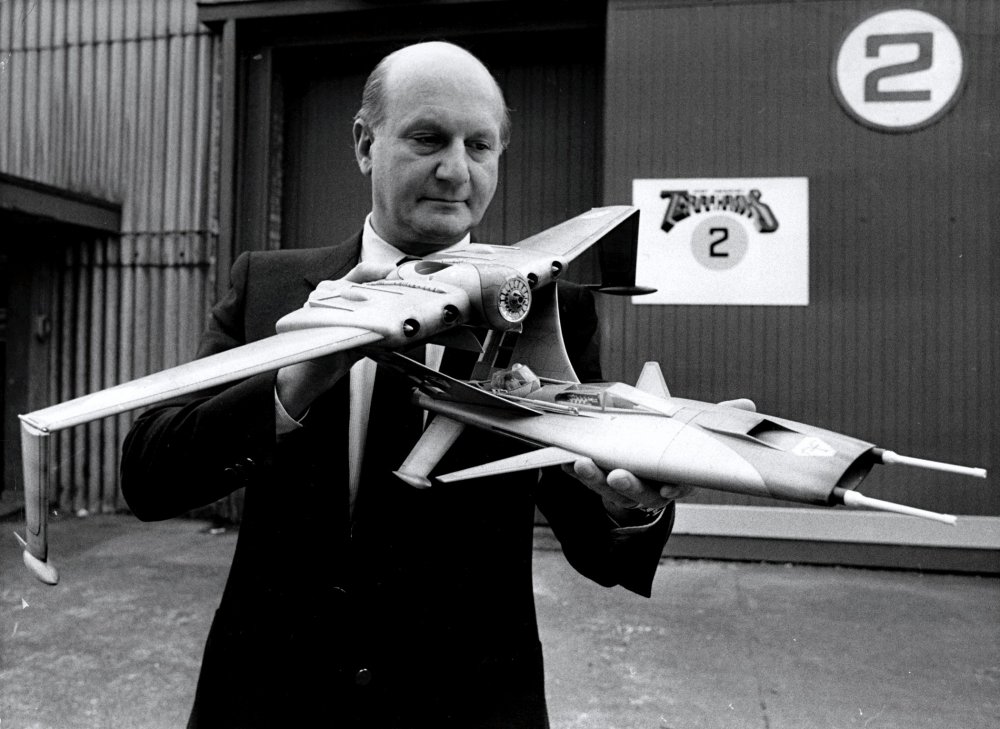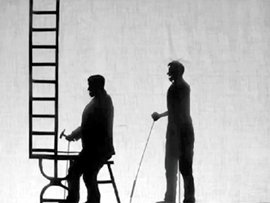Web exclusive

Kids of the 1960s literally grew up with Gerry Anderson’s Supermarionation shows. Infants who tuned in to the broad, fantastical puppet western Four Feather Falls (1960) – or caught reruns of precursor shows Twizzle (1957) and Torchy the Battery Boy (1957-8) – were gifted almost every year with a new, more elaborate, more sophisticated, more ‘realistic’, more grown-up series to suit their maturing tastes.
The Earthbound half-hour Supercar (1961-2) was followed by the space opera Fireball XL5 (1962-3), which gave way to the submarine science-fiction drama Stingray (1964-5) – a segue from black-and-white to colour, though UK TV viewers of the monochrome era wouldn’t get the full benefit of that until 1970s reruns, even if the photos and strips in the licensed comic TV 21 and the packaging of the toys revealed the vivid, colourful design of Anderson’s future world. Then there was the hour-long, gadget-filled, utopian rescue drama Thunderbirds (1965-66), which has strong claims to be considered Anderson’s masterwork, and the edgier, paranoid, quite disturbingly ambiguous Captain Scarlet and the Mysterons (1967-8).
Scripts became more ambitious and advances in puppetry made the marionettes more closely resemble real people, though at the cost of flattening out the characterisation, the marvellous eccentrics of Stingray and Thunderbirds giving way to Captain Scarlet’s buttoned-down robots. The design of the wonder vehicles which populated these shows remained outstanding – it’s no wonder such pleasing inventions as Stingray and Thunderbird 2 remained popular as toys well into the real 21st Century – and the use of music (the theme songs and tunes are indelible), miniatures (gorgeously elaborate, and often blown up), editing (the snare-drum cuts of Captain Scarlet) and voice artistry (Sylvia Anderson and David Graham, notably, as Lady Penelope and Parker in Thunderbirds) was consistently engaging and inventive. “Anything can happen in the next half-hour” promised the opening of Stingray, and Anderson’s 60s oeuvre delivered on that promise.
The expanding 21st-century empire, which (at least in the comic) tied all these shows together, included feature film spin-offs of Thunderbirds and the odd live-action science fiction film Doppelgänger aka Journey to the Far Side of the Sun (1969). After Captain Scarlet, Anderson seemed impatient with the puppets. With its kid hero, Joe 90 (1968-9) felt childish (though the premise prefigures Joss Whedon’s Dollhouse by decades), and 11-year-old veterans of the Mysteron War rejected it as kids’ stuff – whereas The Secret Service (1969), a blend of puppets and live action, went unseen for years.
Anderson’s live-action science fiction shows UFO (1970-73) and Space: 1999 (1975-77) have their admirers, and UFO especially stands up as an example of cool paranoia, again pitting humanity against an enigmatic alien menace.
The core achievements of Gerry Anderson, however, are the shows made between 1962 and 1968, which still present a thrilling, inspiring futuristic vision. He was parodied – most notably by Peter Cook and Dudley Moore in Not Only… But Also and Trey Parker and Matt Stone in Team America: World Police – but his best work had its own rich seam of humour. Technicians who began with him went on to Bond, Star Wars and other major projects, but cognoscenti still recognise the achievements of his television toy-room.
Also in the March 2013 issue of Sight & Sound

Obituaries 2012
Bob Mastrangelo’s survey of the film greats and lesser-knowns who left us during 2012, with new obituaries of Herbert Lom, Sylvia Kristel, Yamada Isuzu, Seyfi Teoman and child actors of the silent era.






